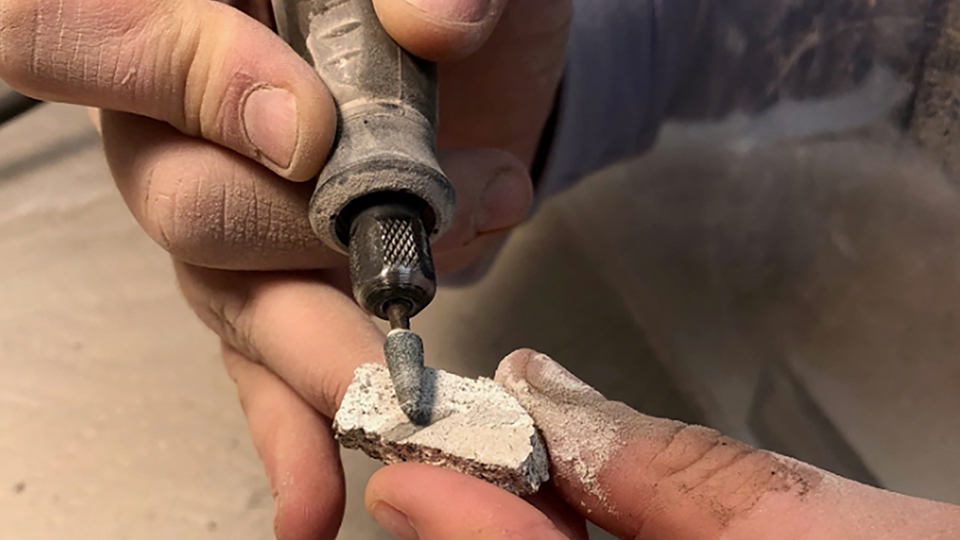
Jan. 23, 2025
Contact: Uriah Orland, 573-884-5139, uriah.orland@missouri.edu
A recent study published by a team of researchers from Western Michigan University, the University of Missouri, and the University of Akron sheds light on the ceramic production practices of the Neo-Assyrian Empire, offering new perspectives on how fineware pottery was manufactured and distributed during the Iron Age (c. 900–600 BCE).
The study utilized neutron activation analysis (NAA) conducted by the Archaeometry Laboratory at the University of Missouri Research Reactor (MURR) to examine pottery fragments excavated from the ancient site of Ziyaret Tepe (Tušhan), a regional capital of the Neo-Assyrian Empire in southeastern Turkey.
The study focused on Palace Ware, a highly refined type of fineware pottery associated with elite Assyrian dining traditions. By analyzing its chemical composition alongside more common wares, the team sought to determine whether Palace Ware was locally produced or imported from the Assyrian heartland in modern-day northern Iraq.
Key findings revealed significant consistency in the clays of the upper Tigris River Valley in Turkey and the lower Tigris region near the Assyrian capitals of Nineveh and Nimrud. This similarity indicates that Palace Ware at Ziyaret Tepe could have been produced locally, imported, or a mix of both. If manufactured locally, this suggests that regional centers like Tušhan had skilled potters capable of replicating imperial styles, potentially operating with some degree of autonomy from central control.
The research was supported by the Archaeometry Laboratory at MURR, the largest university research reactor in the United States. MURR is renowned for its application of neutron activation analysis, a precise technique that identifies the elemental composition of materials at parts-per-million levels. This method involves irradiating samples with neutrons, causing the atoms to emit gamma rays unique to each element, allowing researchers to accurately trace the geographic origin of archaeological artifacts.
“Neutron activation analysis was pivotal in this study, allowing us to detect the unique chemical fingerprints of the pottery and trace their origins with remarkable precision,” said coauthor James Davenport, lead senior scientist at the MU Archaeometry Laboratory. “Without this advanced technique, distinguishing local production from imports would have been nearly impossible.”
The findings not only enhance the knowledge of Assyrian craftsmanship but also open new avenues for exploring the dynamics of imperial administration and local production during one of history’s most powerful empires.
“Tracing fineware production in the Neo-Assyrian empire: Neutron activation analysis of common and Palace Ware in the upper Tigris River Valley, Turkey” was published in PLOS One. Funding for the study and the MU Archaeometry Laboratory was provided by the National Science Foundation and Western Michigan University.